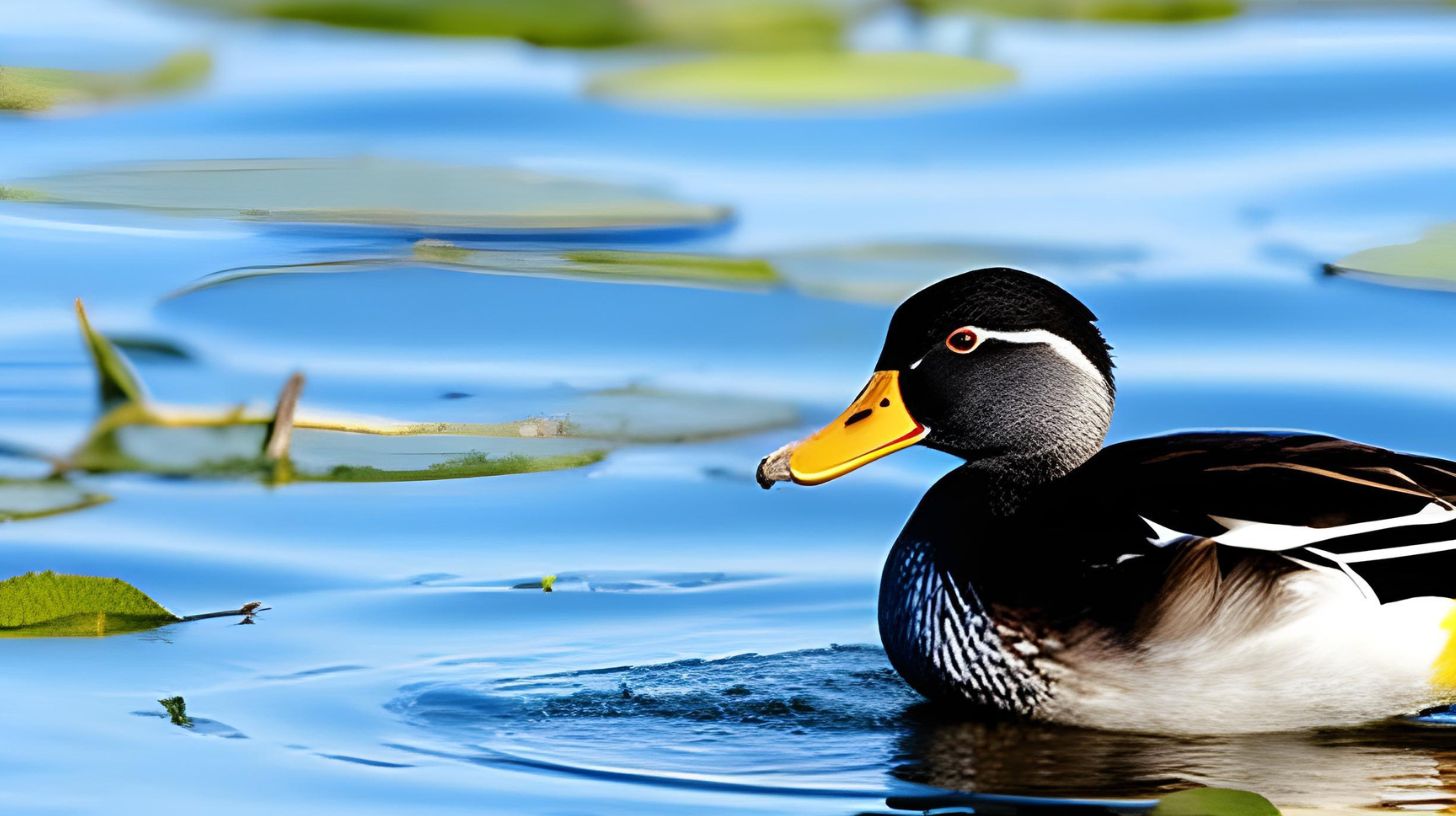How To Introduce Ducklings To Ducks? A Friendly Guide

Table of content:
Welcoming new ducklings to your flock can be an exciting time! However, proper introduction is crucial to ensuring everyone gets along swimmingly. Introducing ducklings to adult ducks requires planning and patience to prevent stress or harm to the babies. Follow these tips to help the ducklings transition smoothly into the existing flock.
Consider Isolating Ducklings First
When bringing home new ducklings, it’s often best to keep them separated from mature ducks at first. This gives the ducklings time to settle in, while allowing you to monitor their health. Keep the ducklings in a brooder with food, water, and proper heat for 4-6 weeks.
During this period, restrict interaction with adult ducks. Limited contact through a wire mesh barrier is okay. But avoid full integration until the ducklings have grown stronger and more independent.
Complete isolation isn’t necessary though. As the ducklings grow, brief daytime interactions can help them learn adult behaviors. Just supervise closely and separate them again at night.
Choose the Right Age to Introduce Ducklings
So when is the right time to fully integrate new ducklings? Consider their age and size compared to the adult ducks.
Small ducklings under 4 weeks old are very vulnerable to being picked on or injured. Wait until at least 4-6 weeks of age before introducing ducklings to adult ducks. Even better if you can wait until 7-8 weeks old.
The exception is if you have a particularly docile breed like a Silver Appleyard or Pekin. Gentle adults may tolerate younger 2-3 week old ducklings. But still supervise closely.
In addition to age, the ducklings’ size matters too. If they are still significantly smaller than the adult ducks, they can easily get pushed around or trampled. Wait until the ducklings are at least 2/3 the size of the mature ducks before integrating them.
Pick the Right Adult Ducks
Not all adult ducks take kindly to newcomers. When possible, select adults who are calm, non-aggressive, and have experience raising ducklings. Keep a close eye on grumpier adults who may try to dominate or deter the youngsters.
Broody hen ducks can be ideal for duckling introduction. Their mothering instincts help them accept ducklings of all ages into their care.
Avoid integrating ducklings with overly aggressive males who may injure or kill them. Drakes are not needed for young ducks to develop normally.
Having multiple ducklings helps too. Adults may focus aggression on a lone newcomer. But a few ducklings together distract this unwanted attention from any individual.
Choose a Neutral Introduction Area
Don’t just toss the new ducklings straight into the adults’ established territory. This can trigger aggressive defense behaviors.
Instead, introduce the groups in a new neutral space. This could be a separate fenced pen, large kiddie pool, or enclosed yard area. Provide shelter and distribute food/water widely to minimize competition.
The neutral space allows everyone to interact safely without an adult feeling the need to defend territory. Supervise continuously and remove any duck showing signs of aggression.
After several hours together, they can usually be combined into shared housing if things are going smoothly. But continue to watch for any concerning behavior.
Introduce at Daylight Hours
Despite the myth that ducks are most active at night, they generally interact and forage most during daylight hours. Introducing ducklings during the day allows better supervision of the initial interactions.
Night introductions can be risky since you won’t be able to monitor for any aggressive or dangerous activity. Adult ducks may pick on vulnerable ducklings once the sun goes down.
Natural daylight also keeps the ducks calmer. Artificial light at night can cause stress and irrational aggressive behaviors.
Aim for an introduction shortly after morning feeding when the adults are content. Avoid introducing new ducks just before breeding season either. Territorial aggression peaks then.
Have a Backup Plan
Sometimes even the best planning can’t force ducks to get along. Be prepared if introductions don’t go smoothly right away.
Have a second brooder or separate pen ready in case you need to quickly separate the ducklings again. Closely supervise all interactions for the first few days. Watch for signs of aggression like feather pulling, biting, or dominant body posturing.
Be ready to separate any individuals that seem stressed or are picking fights. Try reintroducing them in smaller subgroups if needed. But certain adults may never fully accept newcomers. In those cases, permanent separation is safest for the ducklings.
Don’t leave ducklings unattended with the group until you are 100% confident of stable positive interactions. Their health and safety should be the top priority.
Provide Plenty of Resources
Competition over resources is a major trigger for aggression and bullying. Ensure there is enough food, water, shelter, and space for the whole flock when combining ducks.
Scatter multiple small food and water stations around instead of crowding ducks together. Provide adequate nest boxes, shelter, and perches to prevent battles over prime real estate.
Add extra resources in the introduction space too. When ducks feel their needs are met, there will be less infighting. Reduced competition helps the ducklings integrate smoothly.
Watch for Ongoing Issues
The first few days are the most unstable as ducks establish relationships. But even once through the initial introduction, conflicts can arise down the road.
Continually observe the combined flock for signs of discord like:
- Frequent aggressive displays or attacks
- Ducklings hiding or isolated from the group
- Specific ducks being chased/bullied by others
- Feather pulling or evidence of injuries
If you notice bullying or discord, act quickly to resolve it. Separate aggressors if needed. Make sure ducklings can access food/water and are not being excluded.
With time and patience, the flock should eventually accept the ducklings as members. But always keep an eye out and don’t hesitate to step in if you observe bullying behaviors.
Be Patient and Offer Support
Integrating ducks does not always go perfectly right off the bat. But don’t get discouraged if it takes time for your flock to adjust.
Check in frequently, redirect any unwanted behaviors, and give your ducks time to get accustomed to each other. Provide extra shelter boxes/perches so ducklings can escape if needed.
With consistent observation and intervention when necessary, the flock should eventually welcome the new ducklings into their social sphere. Just remember – patience and prudence is key when introducing ducks.
Final Thoughts
Bringing home cute new ducklings is an exciting event! But their introduction takes thought and care to ensure safety. By isolating ducklings initially, selecting compatible adults, supervising closely, and providing abundant resources, you can facilitate smooth integration into your flock. Remember to have a backup plan if any issues arise requiring separation. With time and patience, your ducks will come to accept the newcomers as part of the family. Here’s to many happy years enjoying your growing flock!
Welcome. I’m Adreena Shanum, the proud owner of this website, and I am incredibly passionate about animals, especially poultry. I founded adreenapets.com as a labor of love, stemming from my desire to share my knowledge and experiences with poultry enthusiasts worldwide.




